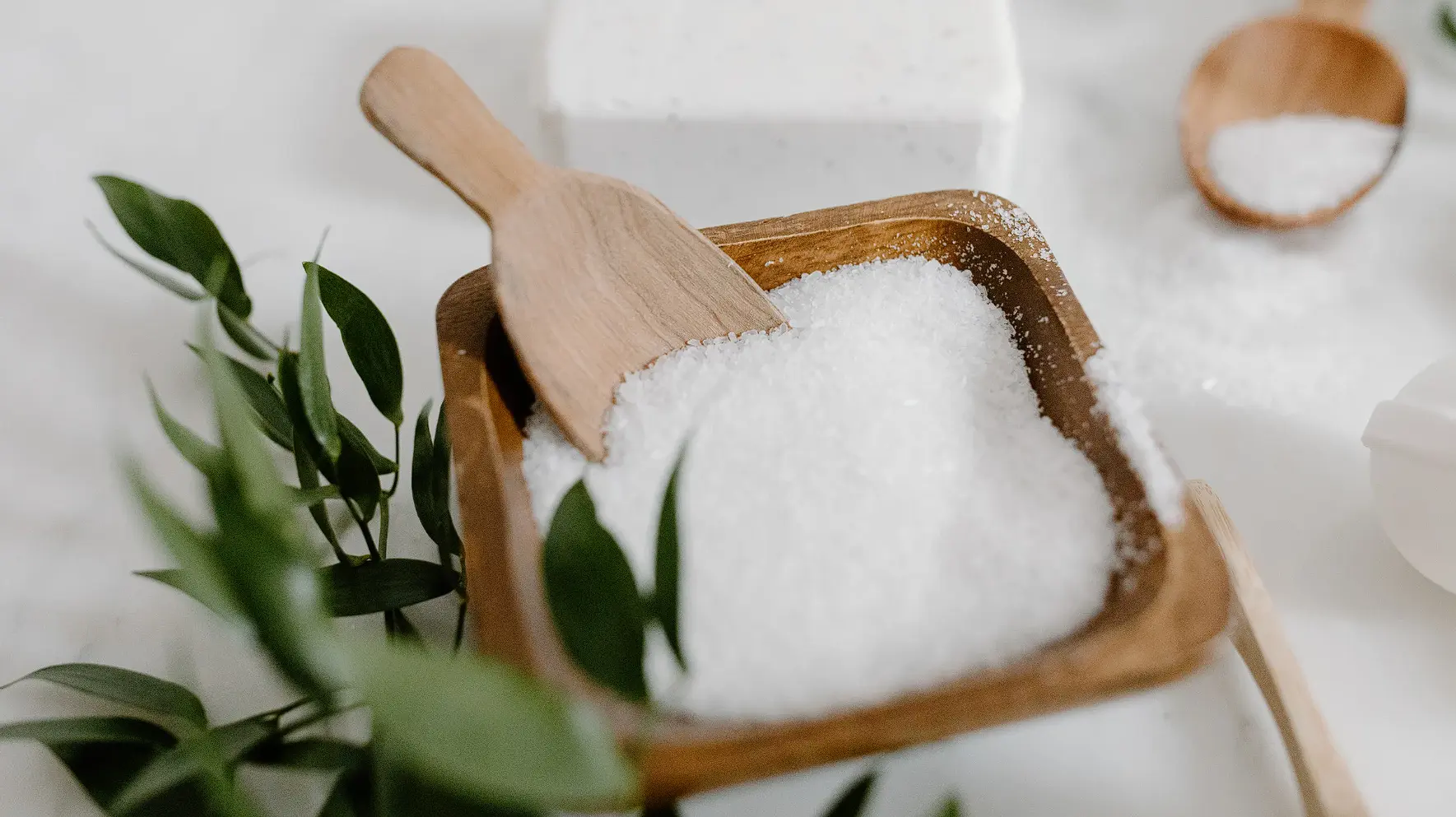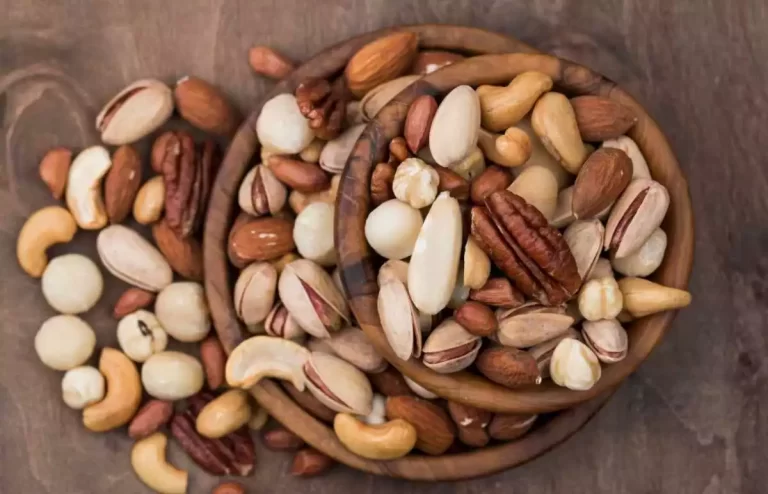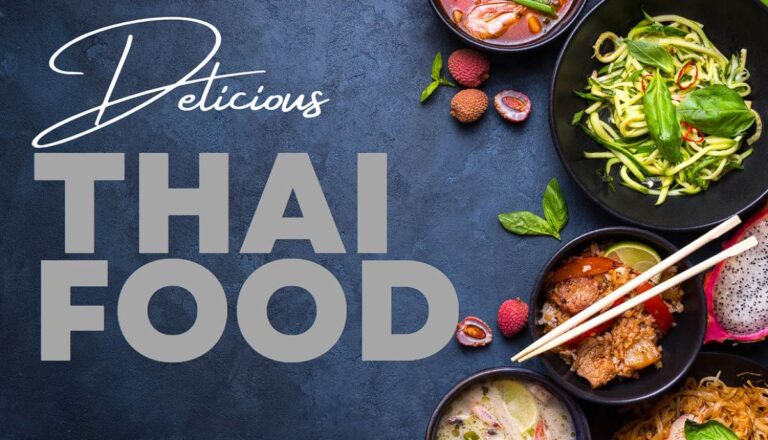Discover the Wonders of Healthy Salt: Improve Wellness

Introduction to Healthy Salt
The Flavorful Essence of Healthy Salt: A Culinary Necessity
Salt, my dear readers, is not merely a humble condiment that adds a touch of flavor to our dishes; it is an integral ingredient that brings out the enchanting symphony of tastes in every mouthful. This crystalline substance has been treasured for centuries, enhancing the palates of both royalty and common folk alike. But beyond its gustatory delights lies a deep-rooted importance in our diet, one that extends far beyond the confines of our taste buds.
Table of Contents
Understanding Sodium’s Vital Role: The Salt of Life
Salt, chemically known as sodium chloride (NaCl), plays an indispensable role in maintaining our bodily functions. The element sodium, found abundantly in salt, acts as a key player in regulating fluid balance within our cells.
It helps ensure that our bodies stay well-hydrated by retaining water where it’s needed and preventing dehydration. In addition to its hydration wizardry, sodium also acts as an electrician for our nerves and muscles.
It facilitates the transmission of nerve impulses throughout our body’s intricate network and ensures proper muscle contraction. So when you flex your biceps or perform an exquisite ballet pirouette, remember to thank sodium for helping you gracefully execute those movements.

The Dark Clouds Loom: Excessive Sodium Consumption
While healthy salt certainly adds pizzazz to culinary creations and performs essential physiological functions, there can be too much of a good thing. Excessive salt consumption poses health risks that can cast a gloomy shadow over even the brightest gastronomic experiences.
One major concern associated with excessive sodium intake is its impact on blood pressure levels. Too much sodium can manifest itself as hypertension—a silent thief that quietly increases your risk of heart disease and stroke.
Additionally, an unhealthy balance between sodium and potassium levels in the blood can disrupt the delicate equilibrium of fluid distribution within our bodies, leading to bloating and edema. Beyond cardiovascular implications, excessive salt intake may also contribute to kidney problems, exacerbate certain autoimmune conditions, and leave us feeling perpetually parched.
So, as we embark on this flavorful exploration of healthy salt alternatives, let us keep in mind the potential pitfalls of overindulging in this delectable mineral. Dear readers, healthy salt is not merely a humble seasoning but a key component that brings harmony to our palates and sustenance to our bodies.
As we delve deeper into the world of healthy salt alternatives, let us celebrate its culinary prowess while remaining mindful of the potential risks associated with excessive consumption. So grab your spice jars and prepare for a tantalizing journey into the realm of healthy salts that will add both flavor and wellness to your culinary endeavors.
Understanding Different Types of Healthy Salt
Common Table Salt: Its Processing and Additives
Subtitle: The Sneaky Culprit Hiding in Your Kitchen Cabinet When you think of healthy salt, the white granules sitting on your table likely come to mind. Common table salt, also known as refined salt, is the most widely used type of salt in households across the globe.
But what exactly is it? Well, brace yourself for a revelation – common table salt undergoes intense processing that strips away its natural minerals and essential nutrients.
During the production of table salt, manufacturers typically extract it from underground deposits or evaporate seawater. However, this is only the beginning.
To make it look more appealing and prevent clumping, various additives like anti-caking agents (such as sodium silicoaluminate), iodine compounds (for iodized salt), and sometimes even sugar are mixed in. These additives may raise concerns about potential health risks associated with their consumption.
Sea Salt: Its Natural Extraction Process and Mineral Content
Subtitle: A Taste of the Ocean’s Bounty Imagine standing on a picturesque beach with waves crashing at your feet – that’s where sea salt comes from.
Unlike its processed counterpart, sea salt retains its natural form and minerals due to minimal processing. It is obtained through evaporation of seawater either by using solar energy or through quick industrial methods.
The unique extraction process allows sea salt to retain trace elements like magnesium, calcium, potassium, and zinc alongside sodium chloride. These minerals not only contribute to its distinct flavor but can also offer potential health benefits when consumed in moderation.
Himalayan Pink Salt: Origin, Unique Properties, and Health Benefits
Subtitle: A Himalayan Gem for Your Palate If there was ever royalty among salts, Himalayan pink salt would undoubtedly wear the crown.
Mined from the Khewra Salt Mine in Pakistan, this magnificent salt is believed to have formed over millions of years. Its distinct pink hue comes from the presence of trace minerals like iron oxide.
What sets Himalayan pink salt apart is its potential health benefits. Advocates claim that it contains more minerals than common table salt, including calcium, potassium, and magnesium.
These minerals are said to support hydration, balance electrolytes, and aid in proper nerve and muscle function. However, it’s worth noting that scientific research on these specific benefits is limited.

Kosher Salt: Its Role in Cooking and Food Preparation
Subtitle: More Than Meets the Eye Contrary to popular belief, kosher salt isn’t called so because it satisfies Jewish dietary laws (although it does!). The name originates from its traditional use in the process of koshering meat by drawing out blood.
Unlike regular table salt or sea salt, kosher salt has a coarser texture that makes it easier to sprinkle evenly over food while cooking. Kosher salt’s larger crystals make it ideal for seasoning meats as they readily adhere to the surface without dissolving too quickly.
This unique trait enhances flavors and helps achieve a desirable crust when searing or roasting. Understanding different types of healthy salts allows us to make informed choices about what we consume.
While common table salt serves its purpose on our dining tables with added preservatives and anti-caking agents, sea salt retains natural minerals due to minimal processing. Himalayan pink salt can add a touch of luxury while potentially offering additional trace minerals for our bodies’ benefit.
Kosher salt plays a specific role in food preparation due to its coarse texture and ability to enhance flavors during cooking processes. So next time you reach for that salt shaker or sprinkle some into your recipes, consider which type you’re using – it may just elevate your culinary experience!
The Health Benefits of Healthy Salt
Regulating Fluid Balance in the Body
Did you know that healthy salt plays a crucial role in maintaining proper fluid balance in our bodies? It’s true!
Sodium, a key component of healthy salt, helps regulate the amount of water inside and outside our cells. When we consume healthy salt, the sodium ions attract water molecules, preventing dehydration and ensuring our cells stay hydrated.
But it’s not just sodium; potassium also plays a vital role in fluid balance. These two minerals work together as a team to maintain hydration levels and prevent both excessive thirst and water retention.
Impact on Blood Pressure Regulation
Blood pressure is another aspect of our health that salt can influence. While excessive sodium consumption has been linked to high blood pressure, moderate intake of healthy salt actually helps regulate blood pressure levels. How does this work?
Well, when we consume healthy salt, sodium acts as an electrolyte that aids in maintaining appropriate blood volume. On the other hand, potassium helps relax blood vessel walls, promoting better blood flow and lowering blood pressure.
Supporting Proper Nerve Function and Muscle Contraction
Healthy salt is not just about taste; it also impacts how well our nerves function and how efficiently our muscles contract. Sodium plays a crucial role in transmitting nerve impulses throughout our body. These impulses are what allow us to move, feel sensations like touch or pain, and even think!
Without enough sodium to facilitate these nerve signals, communication within our body would be disrupted. When it comes to muscle function, both sodium and potassium play essential roles as well.
Sodium ions help initiate muscle contraction by stimulating calcium release within muscle fibers. This process enables muscles to contract with strength and precision.
Additionally, adequate potassium levels are necessary for proper muscle relaxation after contraction occurs. Together, these minerals ensure that your muscles work harmoniously—whether you’re running a marathon or simply picking up a cup of coffee.
Sodium’s Role in Transmitting Nerve Impulses
Let’s dive a bit deeper into the role sodium plays in transmitting nerve impulses. When an electrical signal travels along a nerve, sodium channels open, allowing sodium ions to move into the cell.
As sodium rushes in, it triggers an electrical charge that travels down the nerve fiber. This process repeats, link by link, until the signal reaches its destination—a miraculous feat facilitated by the humble salt we consume.

Maintaining Muscle Strength and Coordination
Ever wondered why athletes often snack on salted foods or electrolyte drinks during intense physical activity? It’s because proper healthy salt intake is essential for maintaining muscle strength and coordination.
During exercise, our bodies lose electrolytes like sodium through sweat. Replenishing these lost minerals helps ensure that our muscles continue to function optimally.
So whether you’re hitting the gym or engaging in any physical activity, remember that healthy salt can be your ally in sustaining endurance and enhancing performance. Healthy salt isn’t just about adding flavor to our food; it plays an integral role in several vital bodily functions.
From regulating fluid balance and blood pressure to enabling nerve transmission and muscle strength, healthy salt is truly a hero of good health. So next time you reach for that shaker of well-sourced sea salt or Himalayan pink salt, appreciate the many benefits it brings beyond taste alone!
Choosing Healthy Salt for a Balanced Diet
Reading labels to identify healthier options
When it comes to choosing healthy salt, the first step is to become a savvy label reader. Many processed foods are loaded with excessive amounts of sodium, which can have negative effects on our health. By carefully studying the nutritional information on packaging, you can identify products that contain lower levels of salt.
Look for labels that indicate low-sodium or reduced-sodium options. Also, be aware of hidden sources of sodium like monosodium glutamate (MSG) and sodium nitrate, commonly found in processed meats.
Avoiding high-sodium processed foods
Highly processed foods are often culprits when it comes to excess sodium intake. These include items like canned soups, deli meats, fast food meals, and frozen dinners.
While they may be convenient choices for busy individuals or those who lack culinary skills, these foods can wreak havoc on our health due to their high salt content. It’s crucial to minimize the consumption of such items or replace them with healthier homemade alternatives.
Identifying low-sodium alternatives
Fortunately, there are plenty of low-sodium alternatives available in grocery stores nowadays. Opting for fresh produce is always a wise choice as fruits and vegetables naturally contain very little sodium while offering an array of other essential nutrients.
Additionally, choosing whole grains over refined grains can significantly reduce your overall sodium intake. When it comes to condiments and seasonings, look for low-sodium versions or explore natural flavor enhancers like herbs and spices.
Selecting the right type of healthy salt for specific needs
Choosing sea salt for a balanced mineral intake
Sea salt is often considered a healthier alternative to common table salt due to its less refined nature and its higher mineral content. As it is derived from evaporated seawater, sea salt retains trace minerals like magnesium, potassium, and calcium.
These minerals not only add flavor but also play important roles in maintaining optimal bodily functions. However, it’s essential to note that sea salt still contains sodium, so moderation is key.

Opting for Himalayan pink salt for additional health benefits
Himalayan pink salt has gained popularity in recent years due to its unique composition and potential health benefits. Mined from ancient salt deposits within the Himalayan mountains, this beautiful pink-colored salt contains a wide range of minerals and trace elements.
These minerals are believed to contribute to better electrolyte balance, improved digestion, and even detoxification properties. While these claims require further scientific validation, incorporating small amounts of Himalayan pink salt into your diet can add a touch of elegance while potentially offering added health advantages.
Choosing healthy salts requires a bit of awareness and mindful decision-making. By carefully reading labels and avoiding high-sodium processed foods in favor of low-sodium alternatives, you can significantly reduce your sodium intake.
Additionally, selecting the right type of healthy salt based on your specific needs can provide additional nutritional value beyond mere flavor enhancement. Whether you opt for sea salt for its balanced mineral content or explore the potential benefits of Himalayan pink salt, remember that moderation is essential in maintaining a well-balanced diet.
Practical Tips for Reducing Sodium Intake without Sacrificing Flavor
Flavorful alternatives to enhance taste without excess sodium
When it comes to reducing sodium intake, many worry that their food will become bland and tasteless. But fear not! There are numerous flavorful alternatives that can elevate your meals without relying on excessive healthy salt.
One such alternative is using herbs and spices. These culinary wonders not only add depth and complexity to your dishes but also bring a wealth of health benefits.
From aromatic basil and oregano to fiery cayenne pepper and turmeric, the options are endless. Incorporating these herbs and spices will awaken your taste buds, making every bite a sensational experience.
Herbs, spices, and citrus fruits as flavor enhancers
Herbs aren’t the only stars in the flavor-enhancing realm; citrus fruits also play a crucial role in transforming ordinary meals into extraordinary culinary creations. The tangy zest from lemons, limes, oranges, or even grapefruits can add a burst of freshness and acidity to any dish.
Squeeze some lemon juice over roasted vegetables or drizzle lime zest onto grilled fish for an instant flavor boost. By incorporating citrus fruits into your cooking repertoire, you’ll discover new dimensions of taste that make reducing salt intake a breeze.
Experimenting with different cooking techniques
In addition to using herbs, spices, and citrus fruits as flavor enhancers, another way to reduce reliance on added salts is by experimenting with different cooking techniques. For instance, grilling imparts a smoky essence that enhances the natural flavors of vegetables or meats without the need for excessive seasoning.
Roasting intensifies the sweetness of root vegetables while caramelizing their natural sugars for an irresistible golden crust. By exploring various methods like steaming or stir-frying, you’ll unlock new ways to coax out rich flavors from your ingredients, allowing you to cut back on salt without sacrificing taste.
Mindful eating habits to reduce reliance on added salts
Avoiding adding extra salt during meal preparation
One of the simplest yet most effective ways to reduce sodium intake is by avoiding the urge to add extra salt during meal preparation. Instead, let the natural flavors of the ingredients shine through.
For example, when cooking pasta or rice, try using low-sodium broths or flavorful spices in place of regular table salt. You’ll be amazed at how vibrant and delicious your meals become without relying on excess sodium.

Limiting consumption of processed and packaged foods
Another essential aspect of reducing reliance on added salts is limiting consumption of processed and packaged foods. These convenience items are often loaded with hidden sodium that can quickly surpass daily recommended limits.
Opt for fresh, whole foods whenever possible, as they naturally contain lower levels of sodium. By cooking from scratch using fresh ingredients, you have full control over the amount of salt that goes into your meals.
Conclusion
Reducing sodium intake doesn’t mean sacrificing flavor; it means embracing a world of exciting tastes and culinary possibilities. By incorporating herbs, spices, citrus fruits, and experimenting with different cooking techniques, you’ll discover a universe of flavors that will make your taste buds dance with joy.
Additionally, practicing mindful eating habits such as avoiding adding extra salt during meal preparation and limiting consumption of processed foods can lead to healthier choices overall. So go forth with confidence in your journey towards healthier eating – deliciousness awaits!
Also See:
- Delicious Basmati Rice: A Culinary Journey into Fragrant Flavors
- Discover the Top 10 Healthiest Mushrooms for Optimal Wellness
- Discover the Best Low Sodium Snacks: Nourishing Delights
- Positive Relationships: The Art of Cultivating and Sustaining
- Discover the Secrets of Balanced Nutrition: Essential Tips for Optimal Health
- 10 Mouthwatering High Protein Vegan Snacks: Boost Your Energy
- Unlocking the Enigmatic Realm of Guitar Price: Harmony and Haggling






